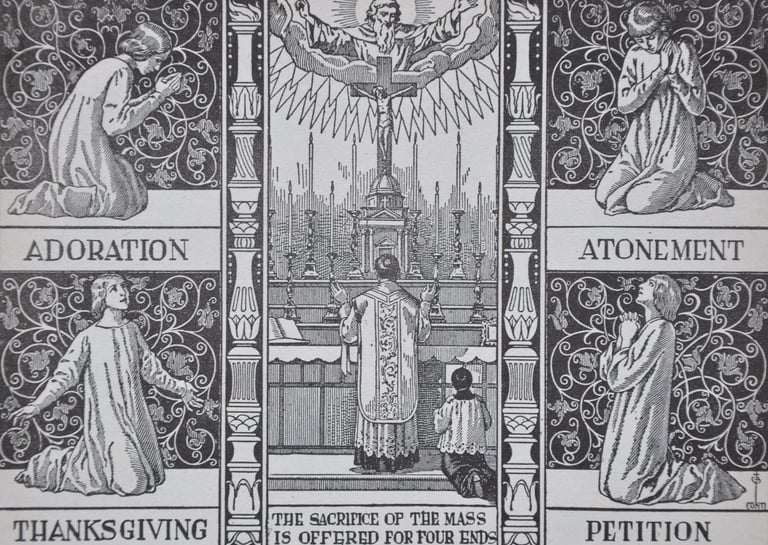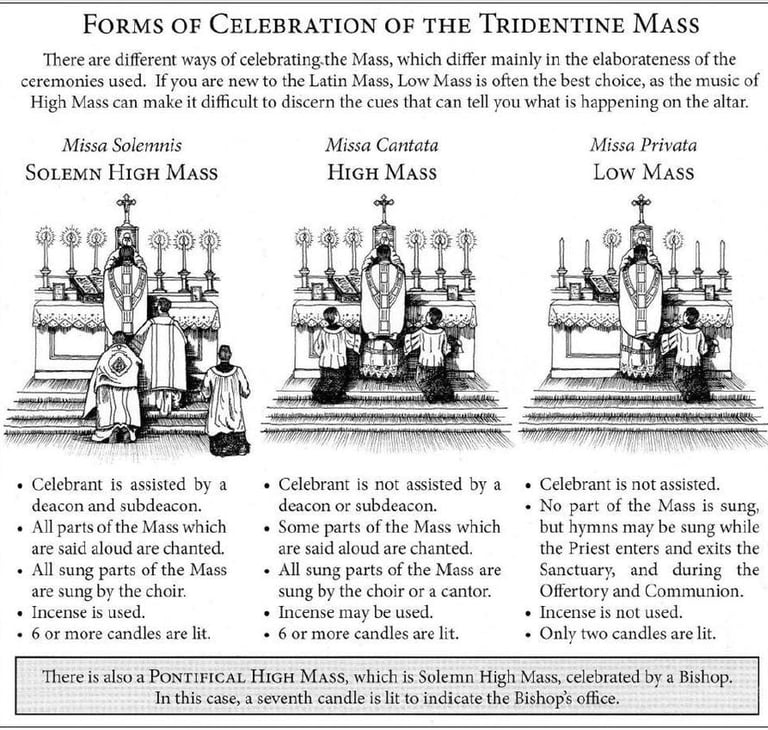
Mass - Traditional Latin Mass
What is THE MASS?
The Mass is the sacrifice of the New Law in which Christ, through the ministry of the priest, offers Himself to God in an un- bloody manner under the appearances of bread and wine.
The Mass is the very same sacrifice which was offered up at the Last Supper and on Calvary; it is the living presence of the sacrifice of the Cross.
The Mass is no mere remembrance or memorial of Calvary. Christ, the Victim of Calvary, is really present, and with Him the permanent power or efficacy of His great sacrifice.
The manner in which the sacrifice is offered is different: on the cross, Christ shed His blood and was put to death, while in the Mass there is no new immolation of the Victim, but only a new offering. On the cross, Christ gained merit and satisfied for us, while in the Mass He applies to us the merits and satisfaction of His death on the cross.
The four purposes for which the Mass is offered are:
1. To ADORE God as our Creator.
2. To THANK God for His many favors.
3. To ASK God to bestow His blessings on all men. (Petition)
4. To SATISFY the justice of God for the sins committed against. (Atonement)
(Source: My Catholic Faith by Louis LaRavoire Morrow)
+++




